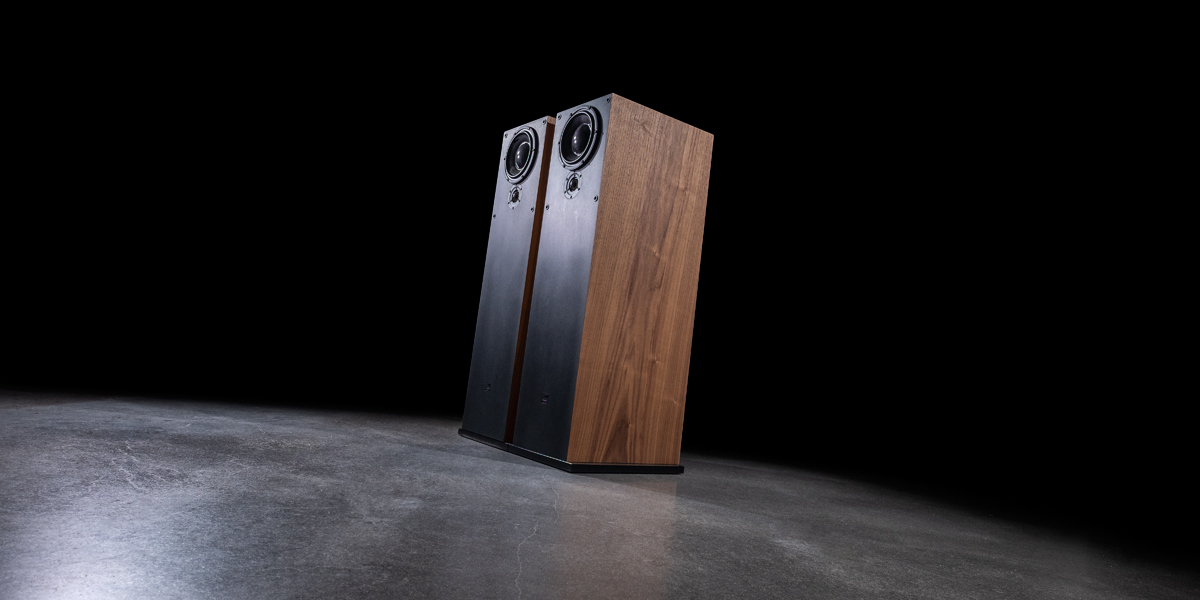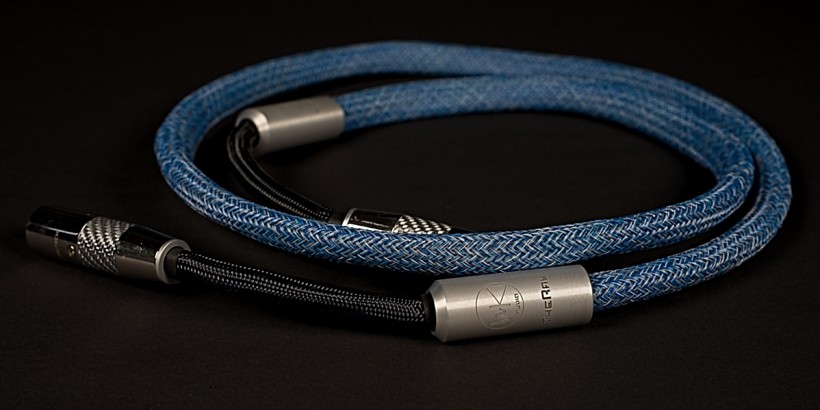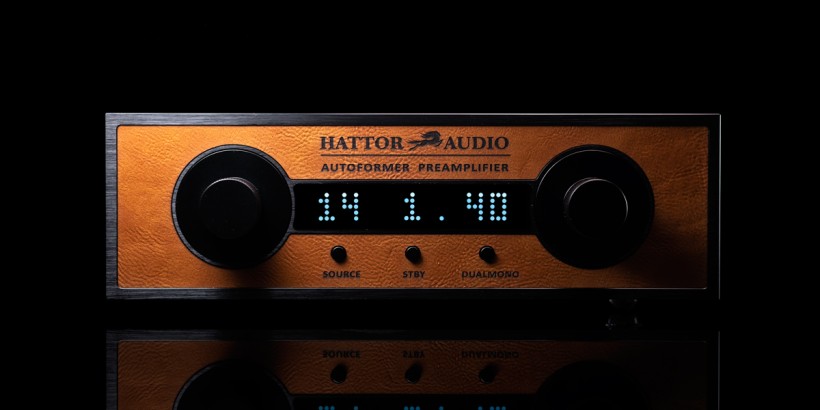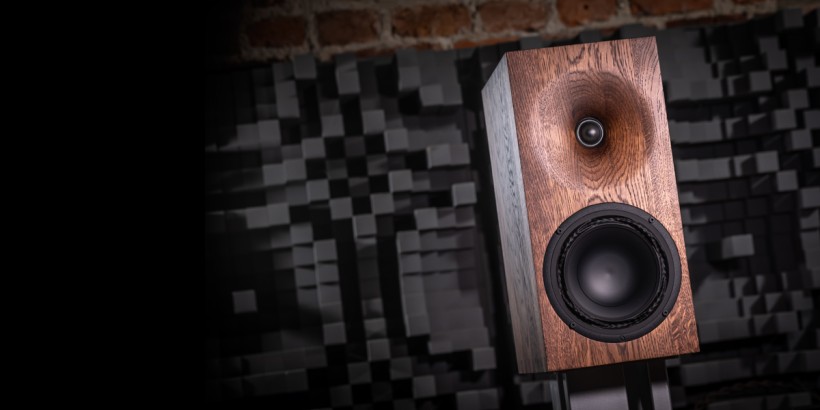Audio distributors usually sell products made elsewhere, but some of them also invest in developments released under their own banner. This report’s speaker set – Intrada Erik – is one such an effort, and now’s the time to find out whether it’s any good. Enjoy!
Introduction
Although the audio industry’s business side might look complex, in practice it’s quite straightforward and rather simple. The most common scenario lists manufacturers who sell their products to distributors and those to shops in direct contact with customers. The less popular alternate approach turns manufacturers into their own resellers who interact with end users without anyone else in-between. Large distributor establishments in charge of their own shop chains to keep cash flow internal aren’t anything new either. Some of them however invest in hardware released under their own flag, and that’s the least traveled route. Here Kevin Scott’s Definitive Audio business and his luxurious Living Voice brand come to mind, or the Polish RCM company and its own RCM hardware heavily focused on vinyl. This report’s Intrada operation located in Poland’s city of Poznań also fits that rare profile.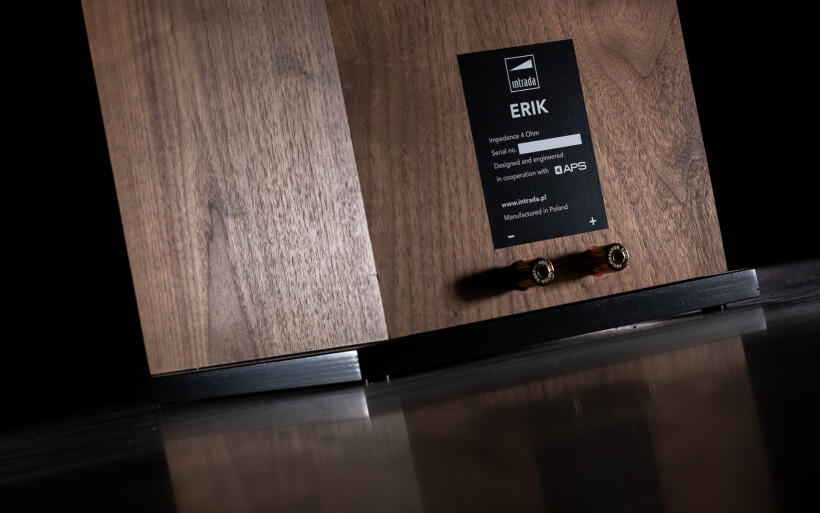 Today’s origin story dates back to the year 1992 when Michał Gogulski established the Polish audio company ESA to commercialize his own speaker designs. Two springs later he also opened up a local shop named ‘Fripp’ with his friend Tomasz, where customers could buy records, hardware by i.e. Cambridge Audio, NAD etc., and of course his speakers. A while later in one of Warsaw’s audio stores the former gent became acquainted with Andrzej Zawada, who joined ESA’s ranks in 1996 as a copartner. One year later Michał’s attraction to sales resulted in founding his distribution company Intrada and associated audio shop baptized Hi and Corner, which has been operational under the same address in Poznań ever since opening its doors for the first time. These two endeavors swallowed the man’s entire attention and time, but he was confident about ESA’s bright future under Andrzej’s lead, so they parted ways in friendship in 1999. Since then this speaker house had flourished into one of the most known such companies on the Polish soil.
Today’s origin story dates back to the year 1992 when Michał Gogulski established the Polish audio company ESA to commercialize his own speaker designs. Two springs later he also opened up a local shop named ‘Fripp’ with his friend Tomasz, where customers could buy records, hardware by i.e. Cambridge Audio, NAD etc., and of course his speakers. A while later in one of Warsaw’s audio stores the former gent became acquainted with Andrzej Zawada, who joined ESA’s ranks in 1996 as a copartner. One year later Michał’s attraction to sales resulted in founding his distribution company Intrada and associated audio shop baptized Hi and Corner, which has been operational under the same address in Poznań ever since opening its doors for the first time. These two endeavors swallowed the man’s entire attention and time, but he was confident about ESA’s bright future under Andrzej’s lead, so they parted ways in friendship in 1999. Since then this speaker house had flourished into one of the most known such companies on the Polish soil.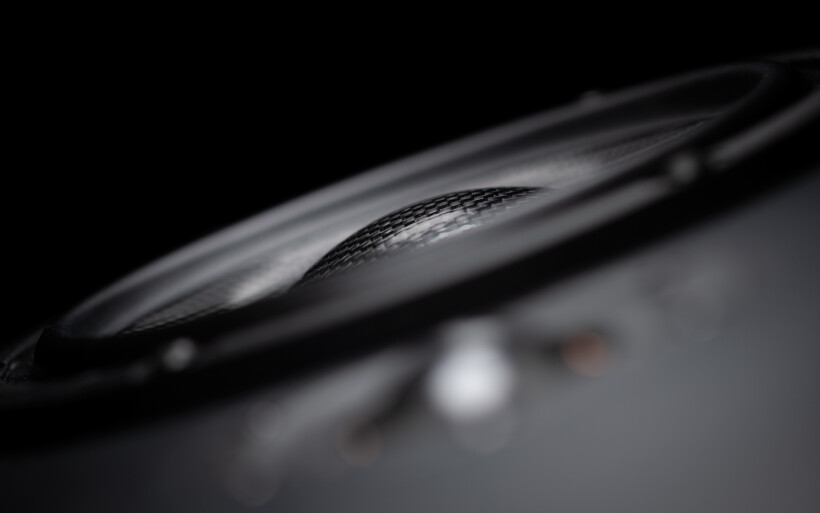 Fast forward to 2021 and Intrada’s current lineup that features just few carefully selected brands; Avid, Bassocontinuo, bFly, EMT, Mastersound, Nagra, Serblin & Son, Stenheim and Zavfino. Although this rather compact lot spans quite the financial gamut, Stenheim’s and Avid’s speakers aren’t exactly affordable so don’t quite fit i.e. amps by Mastersound and Serblin & Son. Michał didn’t find any interesting companions tailored for these brands, so the decision was made to meet the challenge head-on and make his own. In 2015 by coincidence he met one individual with access to a composite of enormous self-damping properties, and several months later ESA’s crew was asked to field-test it in audio applications. Their regular Triton 1 model was outclassed by its sibling based on enclosures made of this newfound material, which later on was also used in ESA’s costly Credo Stone speakers reviewed here.
Fast forward to 2021 and Intrada’s current lineup that features just few carefully selected brands; Avid, Bassocontinuo, bFly, EMT, Mastersound, Nagra, Serblin & Son, Stenheim and Zavfino. Although this rather compact lot spans quite the financial gamut, Stenheim’s and Avid’s speakers aren’t exactly affordable so don’t quite fit i.e. amps by Mastersound and Serblin & Son. Michał didn’t find any interesting companions tailored for these brands, so the decision was made to meet the challenge head-on and make his own. In 2015 by coincidence he met one individual with access to a composite of enormous self-damping properties, and several months later ESA’s crew was asked to field-test it in audio applications. Their regular Triton 1 model was outclassed by its sibling based on enclosures made of this newfound material, which later on was also used in ESA’s costly Credo Stone speakers reviewed here.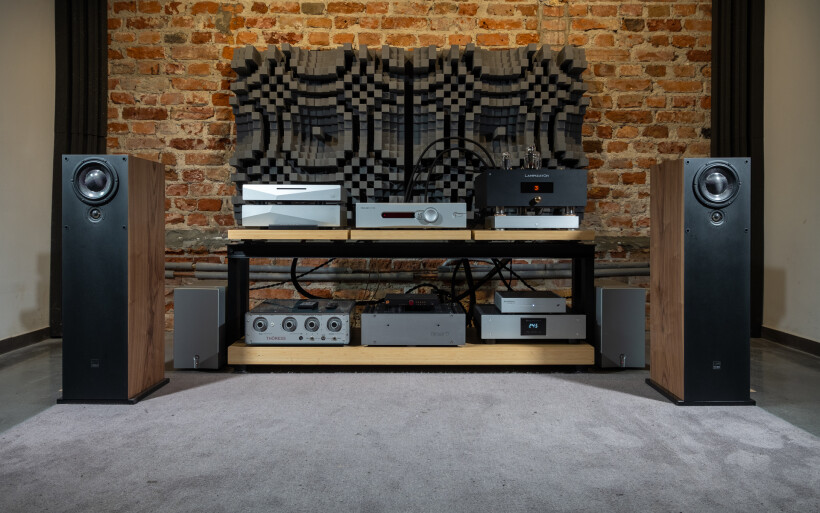 The valuable experience at ESA was the green light for Michał to proceed with his own speaker line and have the above-mentioned composite as its backbone. The knowledge about putting such products together can become a bit rusty over three decades, which is why Intrada’s founder entrusted key design tasks to his old friend Grzegorz Matusiak, known for co-founding the local APS company and his work on Sonddeco’s products. Although Michał had a firm idea what he wanted to achieve and via which means, Grzegorz’s input significantly elevated the outcome. Their conjoined effort resulted in three products in total and this report’s mid-tiered Intrada Erik is the second commercially available. The company’s name stands for an introductory piece of music and repertoire from the Late Baroque era is Michał’s favorite. Needless to say, speakers capable of effortlessly delivering this genre’s entire glory and scale were his top priority.
The valuable experience at ESA was the green light for Michał to proceed with his own speaker line and have the above-mentioned composite as its backbone. The knowledge about putting such products together can become a bit rusty over three decades, which is why Intrada’s founder entrusted key design tasks to his old friend Grzegorz Matusiak, known for co-founding the local APS company and his work on Sonddeco’s products. Although Michał had a firm idea what he wanted to achieve and via which means, Grzegorz’s input significantly elevated the outcome. Their conjoined effort resulted in three products in total and this report’s mid-tiered Intrada Erik is the second commercially available. The company’s name stands for an introductory piece of music and repertoire from the Late Baroque era is Michał’s favorite. Needless to say, speakers capable of effortlessly delivering this genre’s entire glory and scale were his top priority.
Build
Two double cardboards were delivered by Michał himself. Each housed one speaker secure in-between thick foam inserts and inside its own cloth bag. Although their maker promptly helped out with unpeeling them, I’d have easily managed on my own. Each speaker measures (W x H x D) 85 x 23 x 34mm and weighs 20kg, so is enjoyably light to carry and move around a room. It’s a passive ported two-way floorstander design, so two drivers per channel handle the entire bandwidth. Sensitivity is 87dB, frequency response is (-6dB) 28hz – 23kHz. Nominal impedance of 4Ω doesn’t go below 3.7Ω (at 140Hz) and peaks at 55Hz (12Ω).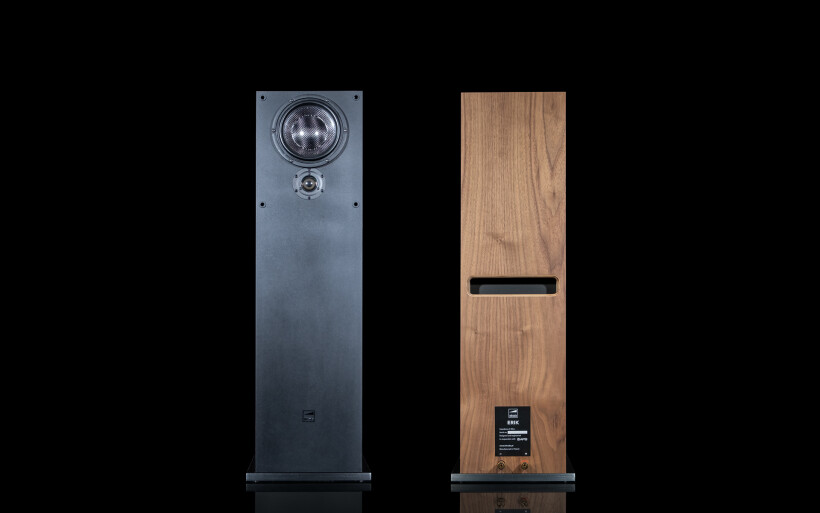 I was told that Erik’s 18mm-thick front baffles based on resin and undisclosed natural material are about 40x dearer versus their MDF counterparts, but on rigidity and acoustic damping superior enough to fully justify the extra expense. Other than this brief info Michał was silent on the subject, but he named MDF as very problematic in general and forbidden in his speakers, which is why almost all remaining bits of Erik’s cabinets are entirely made of plywood. Walnut veneering is the only option at this time, but the list of available finishes will expand in the future.
I was told that Erik’s 18mm-thick front baffles based on resin and undisclosed natural material are about 40x dearer versus their MDF counterparts, but on rigidity and acoustic damping superior enough to fully justify the extra expense. Other than this brief info Michał was silent on the subject, but he named MDF as very problematic in general and forbidden in his speakers, which is why almost all remaining bits of Erik’s cabinets are entirely made of plywood. Walnut veneering is the only option at this time, but the list of available finishes will expand in the future.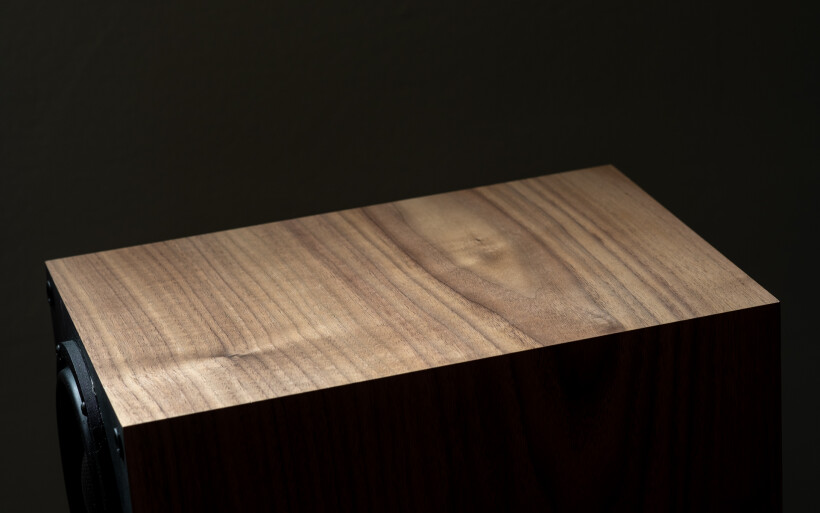 Upon auditioning and rating dozens of different transducers by ScanSpeak, SB Acoustics, Seas and several more, for today’s project Michał and Grzegorz cherry-picked two drivers from Morel’s Supreme range; a 6.3″ SCM 634 transducer with Carbon/Rohacell sandwich cone and Neodymium/Ferrite motor, and a 2.83″ ST 728 soft-domed tweeter with a Neodymium magnet. The former unit I’ve seen i.e. in Reinhard Thöress’ upcoming 1D66 model already introduced by Srajan here. But more importantly, the German engineer tunes his speakers to land a rather specific sonic profile, so my familiarity with his two such products introduced some vague idea what Michał’s newcomer could potentially do, but more on that later.
Upon auditioning and rating dozens of different transducers by ScanSpeak, SB Acoustics, Seas and several more, for today’s project Michał and Grzegorz cherry-picked two drivers from Morel’s Supreme range; a 6.3″ SCM 634 transducer with Carbon/Rohacell sandwich cone and Neodymium/Ferrite motor, and a 2.83″ ST 728 soft-domed tweeter with a Neodymium magnet. The former unit I’ve seen i.e. in Reinhard Thöress’ upcoming 1D66 model already introduced by Srajan here. But more importantly, the German engineer tunes his speakers to land a rather specific sonic profile, so my familiarity with his two such products introduced some vague idea what Michał’s newcomer could potentially do, but more on that later. On proportions and dress code Intrada Erik struck me as similar to many other speakers out there, so at first glance I honestly couldn’t tell whether this visually safe vanilla-flavored affair was any special or not. Compact monolithic exteriors as shown in this report always score reasonably high notes on décor compliance, but that wasn’t important. Preliminary inspection revealed stout assembly and admirable attention to details. Robust composite bases under slightly narrower enclosures I’ve found fitting, and easily detachable petite grills were a nice touch. Still, listed features weren’t anything unusual and I was told that Erik’s performance was prioritized over everything else, so it was high time to look for some evidence.
On proportions and dress code Intrada Erik struck me as similar to many other speakers out there, so at first glance I honestly couldn’t tell whether this visually safe vanilla-flavored affair was any special or not. Compact monolithic exteriors as shown in this report always score reasonably high notes on décor compliance, but that wasn’t important. Preliminary inspection revealed stout assembly and admirable attention to details. Robust composite bases under slightly narrower enclosures I’ve found fitting, and easily detachable petite grills were a nice touch. Still, listed features weren’t anything unusual and I was told that Erik’s performance was prioritized over everything else, so it was high time to look for some evidence.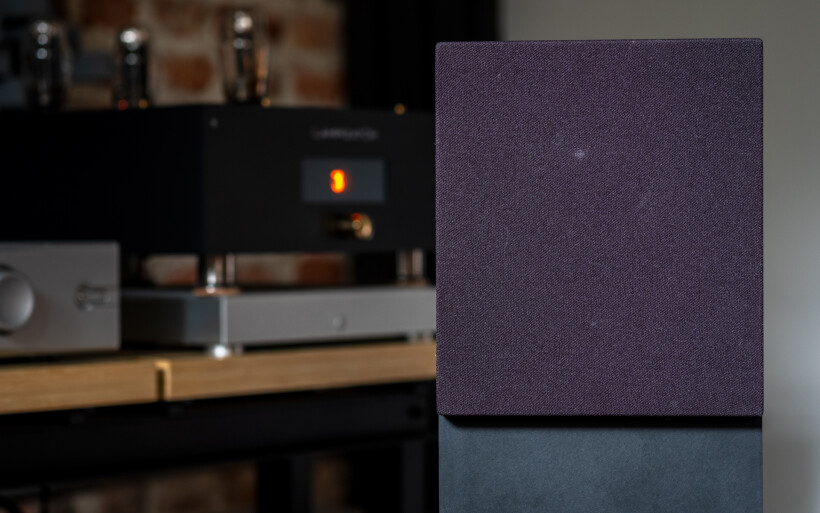 Today’s enclosures incorporate rarely seen materials primarily to provide support for all included components and do it well, whilst dull quiet sound and rock-like sensation upon knocking at these walls confirmed this. Pure Sonic’s anti-vibration brass binding posts just above the product’s bases normally feature aluminium coats, but to allow for joints without solder they include off-the-menu tellurium copper layers instead. Although mid-woofers above tweeters to keep phase coherency in check aren’t anything unheard of, they’re not exactly common and Erik has them. A wide rectangular opening strategically located in the middle of each its cabinet’s rear connects to an elaborate internal venting route a cut above regular bass-reflex plots. All things considered, Erik’s external appearance isn’t as regular as it might seem, but its inside is even more interesting.
Today’s enclosures incorporate rarely seen materials primarily to provide support for all included components and do it well, whilst dull quiet sound and rock-like sensation upon knocking at these walls confirmed this. Pure Sonic’s anti-vibration brass binding posts just above the product’s bases normally feature aluminium coats, but to allow for joints without solder they include off-the-menu tellurium copper layers instead. Although mid-woofers above tweeters to keep phase coherency in check aren’t anything unheard of, they’re not exactly common and Erik has them. A wide rectangular opening strategically located in the middle of each its cabinet’s rear connects to an elaborate internal venting route a cut above regular bass-reflex plots. All things considered, Erik’s external appearance isn’t as regular as it might seem, but its inside is even more interesting.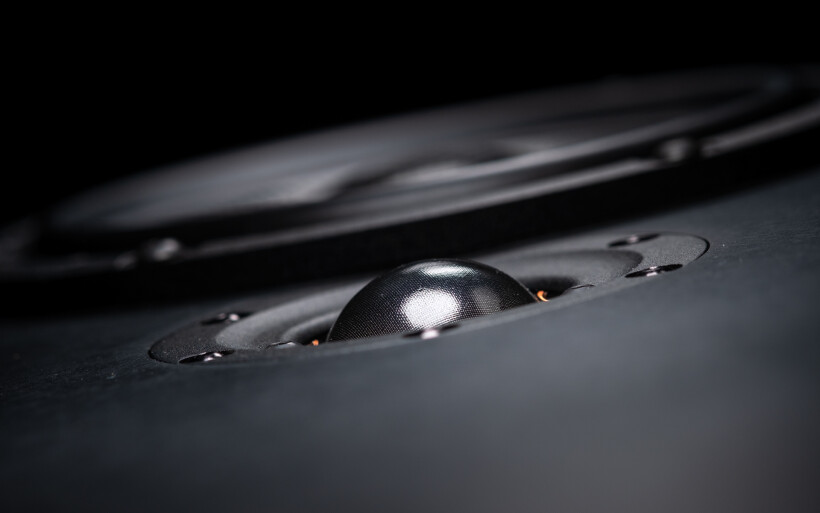 Top and bottom surfaces inside Erik’s cabinets feature 12mm-thick composite boards, reinforcing braces are also based on this material, and so are internal black baffles visible through rear ports. It’s a manufacturer’s sweet secret how exactly these boards partake in venting. All I can say is that they form escape tunnels somewhat similar to transmission lines, but don’t quite fit that profile and are unusually open here and there. Erik’s boxes don’t feature any separate compartments so their drivers share the same large space. I was told that it’s free from standing waves in spite of multiple right angles and no damping material at all. Just one needle-punched wool insert suspended in the middle of each enclosure was used to compensate air velocity across its entire volume.
Top and bottom surfaces inside Erik’s cabinets feature 12mm-thick composite boards, reinforcing braces are also based on this material, and so are internal black baffles visible through rear ports. It’s a manufacturer’s sweet secret how exactly these boards partake in venting. All I can say is that they form escape tunnels somewhat similar to transmission lines, but don’t quite fit that profile and are unusually open here and there. Erik’s boxes don’t feature any separate compartments so their drivers share the same large space. I was told that it’s free from standing waves in spite of multiple right angles and no damping material at all. Just one needle-punched wool insert suspended in the middle of each enclosure was used to compensate air velocity across its entire volume.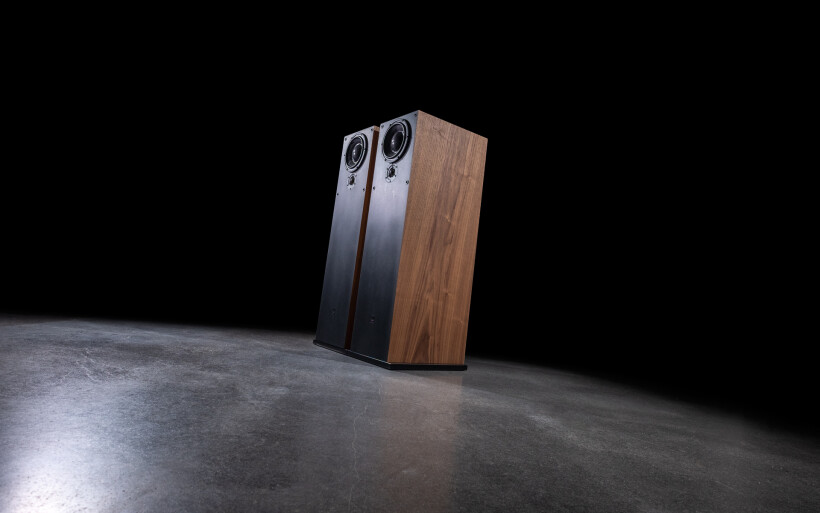 Erik’s tuning frequency stretches from 30 to 49Hz so is unusually wide. Each its box also houses one insert to extend bass reach, but the exact alignment and size of these clever shelf-like parts are also kept under wraps. Crossovers put together on HDF boards include only Jantzen’s components hard-wired point to point; Superior Z-Cap series capacitors and very low-impedance Litz Wire Wax Coils to get by without resistors. Morel’s TSCM 634 mid-woofer is subject to a 2nd-order slope (12dB/octave) at 2kHz, its neighbor ST 728 cut via 1st order filter (6dB/octave) peaks at 10kHz, and the crossover frequency is set at 4.2kHz. Now it’s time to find out how all this translates to sonics.
Erik’s tuning frequency stretches from 30 to 49Hz so is unusually wide. Each its box also houses one insert to extend bass reach, but the exact alignment and size of these clever shelf-like parts are also kept under wraps. Crossovers put together on HDF boards include only Jantzen’s components hard-wired point to point; Superior Z-Cap series capacitors and very low-impedance Litz Wire Wax Coils to get by without resistors. Morel’s TSCM 634 mid-woofer is subject to a 2nd-order slope (12dB/octave) at 2kHz, its neighbor ST 728 cut via 1st order filter (6dB/octave) peaks at 10kHz, and the crossover frequency is set at 4.2kHz. Now it’s time to find out how all this translates to sonics.
Sound
The Innuos Statement handled storage/transport, then a LampizatOr Pacific DAC (KR Audio T-100/Living Voice 300B + KR Audio 5U4G Ltd. Ed.) passed signal to a Trilogy 915R/995R set that connected via a Boenicke Audio S3 speaker cable to the Intrada Erik loaner or Boenicke W11 SE+ floorstanders. Interconnects used were Boenicke Audio IC3 CG and XLRs which I DIY-ed. All key hardware was powered by Boenicke Audio Power Gate distributor box plus its three captive M2 cords and two LessLoss C-MARCs. The USB chain included only one Mercury3.0 USB cable. A set of external LessLoss Firewall for Loudspeakers modules complimented both speaker sets, while a Fidelizer EtherStream was in-between my Linksys WRT160N router and Innuos Statement server. A GigaWatt PC-3 SE EVO+ power conditioner fronted by its own LC-3 EVO cable fed ISOL-8’s Prometheus PSU connected to the router and network switch.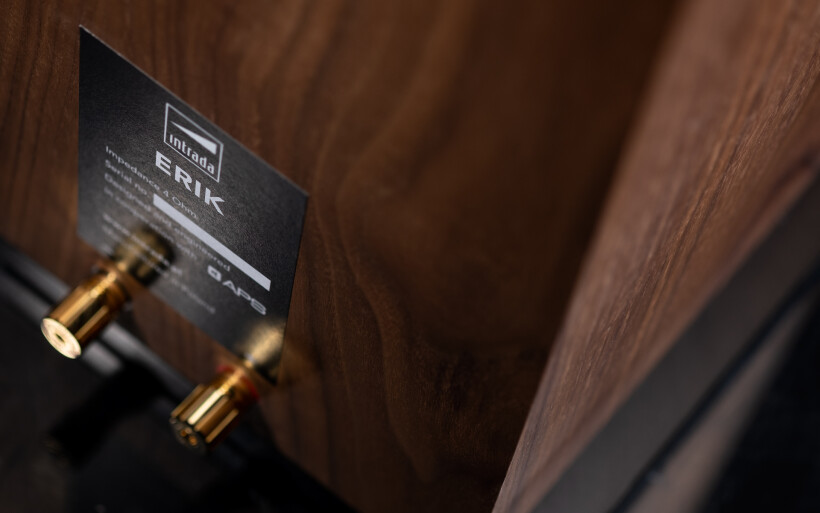 I find speaker assignments as tricky as they’re intriguing. Each such a product has its own spacing requirements and their manufacturers naturally know whether my 24m2 room meets them or not. Still, a loaner set’s exact behavior and optimal positioning in this space call for an investigation in most cases mine alone. Shaky bass or its absence and imaging diffused, flat or too tightly glued to speakers are common symptoms that I’m not there yet. It’s only natural to expect some of these culprits early on, so via trial and error I sort one at a time to eventually land performance worthy of further analysis. This time around Lady Luck was on my side however, upon Michał’s suggestion the Erik distanced some 60/45cm to my crib’s front/side walls was fully ready for action, and the man was pleased too. That deployment could be further increased/decreased to respectively shift the loaner’s gestalt to either quicker and thinner, or slower and bloomier. Usually either one or the other comes on top, but both these scenarios were equally useful for Intrada’s product. More on that subject in a bit.
I find speaker assignments as tricky as they’re intriguing. Each such a product has its own spacing requirements and their manufacturers naturally know whether my 24m2 room meets them or not. Still, a loaner set’s exact behavior and optimal positioning in this space call for an investigation in most cases mine alone. Shaky bass or its absence and imaging diffused, flat or too tightly glued to speakers are common symptoms that I’m not there yet. It’s only natural to expect some of these culprits early on, so via trial and error I sort one at a time to eventually land performance worthy of further analysis. This time around Lady Luck was on my side however, upon Michał’s suggestion the Erik distanced some 60/45cm to my crib’s front/side walls was fully ready for action, and the man was pleased too. That deployment could be further increased/decreased to respectively shift the loaner’s gestalt to either quicker and thinner, or slower and bloomier. Usually either one or the other comes on top, but both these scenarios were equally useful for Intrada’s product. More on that subject in a bit. Amps suitable for this report’s job were no rocket science considering specs involved. The sublime and quick Bakoon AMP-13R finely extended the Erik’s most prominent sonic traits at a cost of heft lesser than I’d like. The balance was restored upon replacing Living Voice 300B tubes inside my DAC with KR Audio’s gutsier though less refined T-100 glass. Although the calmer, darker, thicker and less insightful Firstwatt F7 was well-sorted where the Bakoon wasn’t at first, unsurprisingly it audibly limited the Polish load’s speedometer. All things considered, past these triangulations I saw Nelson Pass’ amp as solid for it but not quite as fit as the AMP-13R. After trying out these two low-power machines it was time for the biggest guns I had at my disposal. Trilogy’s 995R monos pull 100wpc into 4Ω upon engaging their class A circuitry, which is more than twice as much versus other amps I’ve tried. Michał’s introductory speaker set now felt more than happy in such a company. On speed, articulation and shiny reflexes British hulks were a bit behind the Bakoon as per usual, but they kept all my tonal craves at the door. Not only this, now the Pacific DAC could operate with Kevin Scott’s 300B DHTs, by my standards superior over KR’s T-100 tubes.
Amps suitable for this report’s job were no rocket science considering specs involved. The sublime and quick Bakoon AMP-13R finely extended the Erik’s most prominent sonic traits at a cost of heft lesser than I’d like. The balance was restored upon replacing Living Voice 300B tubes inside my DAC with KR Audio’s gutsier though less refined T-100 glass. Although the calmer, darker, thicker and less insightful Firstwatt F7 was well-sorted where the Bakoon wasn’t at first, unsurprisingly it audibly limited the Polish load’s speedometer. All things considered, past these triangulations I saw Nelson Pass’ amp as solid for it but not quite as fit as the AMP-13R. After trying out these two low-power machines it was time for the biggest guns I had at my disposal. Trilogy’s 995R monos pull 100wpc into 4Ω upon engaging their class A circuitry, which is more than twice as much versus other amps I’ve tried. Michał’s introductory speaker set now felt more than happy in such a company. On speed, articulation and shiny reflexes British hulks were a bit behind the Bakoon as per usual, but they kept all my tonal craves at the door. Not only this, now the Pacific DAC could operate with Kevin Scott’s 300B DHTs, by my standards superior over KR’s T-100 tubes.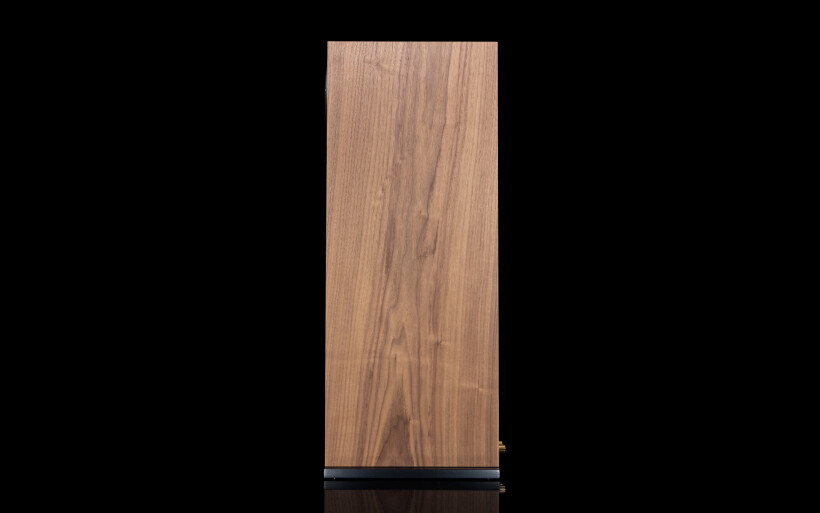 Prior to going any further let’s get back to Reinhard Thöress’ speakers. During one of many conversations the two of us had, this gifted German engineer had explained that in his world music doesn’t exist without bite, elasticity, immediacy, effortlessness, spatial might and energy. If I recall correctly, these lively features he labeled as critical to have him engaged as a listener. Unsurprisingly as an audio maker Reinhard tunes all his products accordingly, and two his floorstander types I’d heard in the past confirmed this without a miss. The last time I checked Thöress 1D66 three-way model housed two Morel’s SCM 634 drivers per box, which is why the Erik’s at least partially alike own sonic tailoring was my careful guess. Long story short, I wasn’t wrong.
Prior to going any further let’s get back to Reinhard Thöress’ speakers. During one of many conversations the two of us had, this gifted German engineer had explained that in his world music doesn’t exist without bite, elasticity, immediacy, effortlessness, spatial might and energy. If I recall correctly, these lively features he labeled as critical to have him engaged as a listener. Unsurprisingly as an audio maker Reinhard tunes all his products accordingly, and two his floorstander types I’d heard in the past confirmed this without a miss. The last time I checked Thöress 1D66 three-way model housed two Morel’s SCM 634 drivers per box, which is why the Erik’s at least partially alike own sonic tailoring was my careful guess. Long story short, I wasn’t wrong.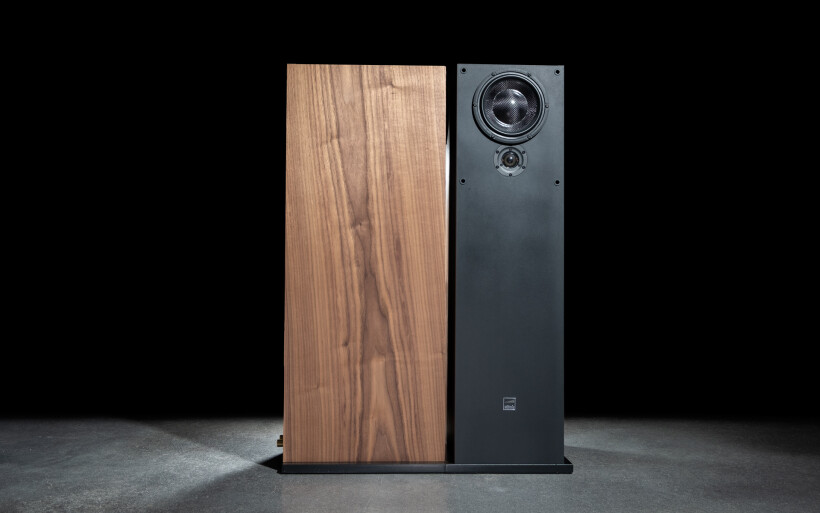 Although I didn’t say a word to Michał whilst he was still at my place, after auditioning several tracks from my usual playlist I had all the necessary info to pen a large chunk of this chapter. His new speaker set simply felt like a good friend which I haven’t seen for a long time. Just to map whether its voicing was the result of deliberate tuning or just accidental work, I had to ask Michał about specific sonic traits he pursued. Upon hearing about agility, control, openness, quickness, insight, wide dynamic range, high in-room independence and ability to effortlessly grow bolder along with volume increase, I knew that the two of us were on the same page. At that time I was also certain that Michał and Reinhard would get along perfectly fine. How wouldn’t they? Their sonic goals were not similar but exactly the same.
Although I didn’t say a word to Michał whilst he was still at my place, after auditioning several tracks from my usual playlist I had all the necessary info to pen a large chunk of this chapter. His new speaker set simply felt like a good friend which I haven’t seen for a long time. Just to map whether its voicing was the result of deliberate tuning or just accidental work, I had to ask Michał about specific sonic traits he pursued. Upon hearing about agility, control, openness, quickness, insight, wide dynamic range, high in-room independence and ability to effortlessly grow bolder along with volume increase, I knew that the two of us were on the same page. At that time I was also certain that Michał and Reinhard would get along perfectly fine. How wouldn’t they? Their sonic goals were not similar but exactly the same.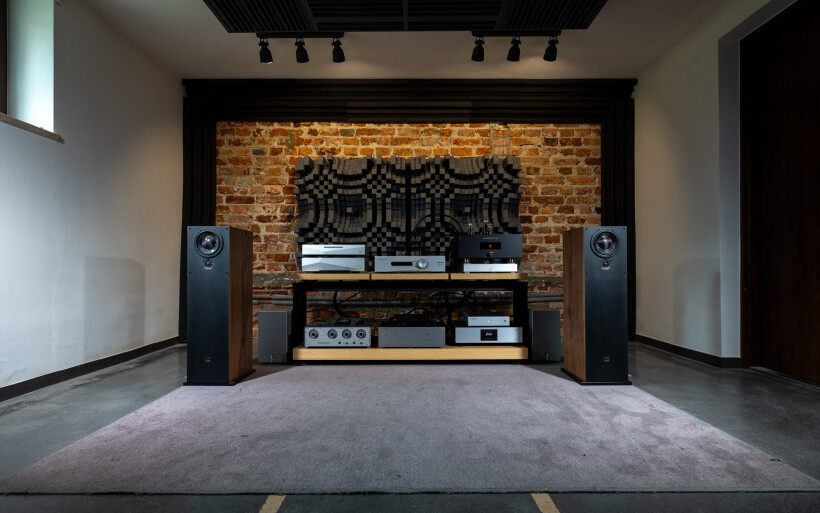 Right from the get-go the Erik introduced itself not as a specimen tailored for colors, cruising speeds, expression, charm and tone, but the exact opposite type. It offered authoritative big-bore very muscular flavor designed for wicked slams, dynamic prowess, authoritative rapid bursts, overall freshness and willingness to casually go very loud. This particularly exciting highly propulsive gearing and overall ease are typical for open baffles and today’s performer clearly belongs to the same club. Upon looking at its humble external appearance one honestly couldn’t tell, and that in fact is this story’s key plot twist. Petite vented boxes such as this one simply aren’t known for fully open large-scale acts as described, but Michał’s latest effort had more in common with the dipole kind than I had initially suspected.
Right from the get-go the Erik introduced itself not as a specimen tailored for colors, cruising speeds, expression, charm and tone, but the exact opposite type. It offered authoritative big-bore very muscular flavor designed for wicked slams, dynamic prowess, authoritative rapid bursts, overall freshness and willingness to casually go very loud. This particularly exciting highly propulsive gearing and overall ease are typical for open baffles and today’s performer clearly belongs to the same club. Upon looking at its humble external appearance one honestly couldn’t tell, and that in fact is this story’s key plot twist. Petite vented boxes such as this one simply aren’t known for fully open large-scale acts as described, but Michał’s latest effort had more in common with the dipole kind than I had initially suspected. Most open baffle speakers are big and inefficient because they rely on large cone surface and/or high excursions to overcome limitations on bass reach, but there are upshots from going this route. The breed’s inherent figure 8 dispersion pattern makes its representatives acoustically dead to the sides. Although the resulting reduced in-room interaction is a major trait all by itself, inches and freedom from a box also mean that dipole designs effectively push a lot of uncompressed air that makes spatially big open direct sound. This distinctively feisty spatially majestic sonic profile feels very different in comparison to what smaller ported products do. Upon cranking up volume some compact speakers might seem as big and liberated in fairly small spaces such as mine, but here decibels don’t matter. It’s all about the unique sensation of high pressure, scale, snap, authority, breathing moving space and large clear instrumental outlines served without a hint of boom, veil or struggle. In my listening cave this report’s product had its lungs developed well enough to provide all these features at once and without a flinch. Put shortly, instead of just pretending it truly was big, and that made all the difference.
Most open baffle speakers are big and inefficient because they rely on large cone surface and/or high excursions to overcome limitations on bass reach, but there are upshots from going this route. The breed’s inherent figure 8 dispersion pattern makes its representatives acoustically dead to the sides. Although the resulting reduced in-room interaction is a major trait all by itself, inches and freedom from a box also mean that dipole designs effectively push a lot of uncompressed air that makes spatially big open direct sound. This distinctively feisty spatially majestic sonic profile feels very different in comparison to what smaller ported products do. Upon cranking up volume some compact speakers might seem as big and liberated in fairly small spaces such as mine, but here decibels don’t matter. It’s all about the unique sensation of high pressure, scale, snap, authority, breathing moving space and large clear instrumental outlines served without a hint of boom, veil or struggle. In my listening cave this report’s product had its lungs developed well enough to provide all these features at once and without a flinch. Put shortly, instead of just pretending it truly was big, and that made all the difference.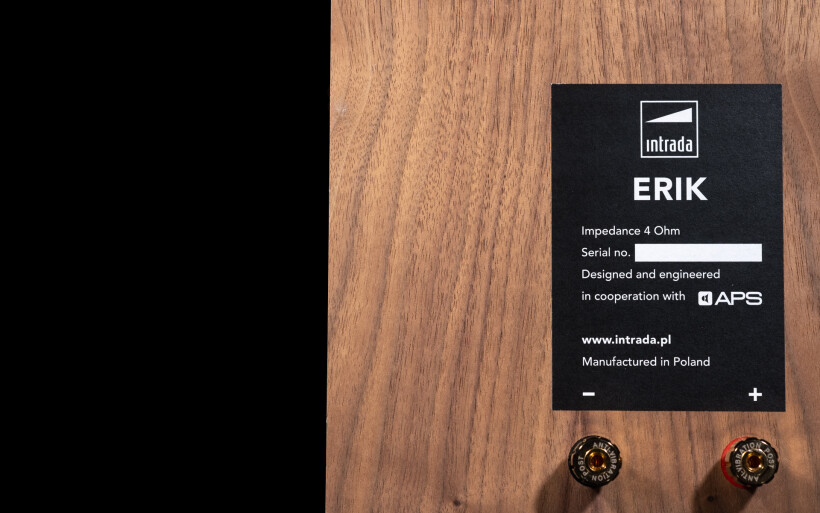 The Erik’s behavior in rooms say twice as large as mine I’ll leave to others, but its evident OB-like sonic tailoring was seriously impressive already, and complete freedom from any unwanted bass turbulence effectively shortened the distance to dipole specimens even more. Michał was vocal about his dislike towards regular bass-reflex plots and associated problems. Still, hearing such confessions from manufacturers is one thing, and finding out that they’re actually true is another. It didn’t matter whether today’s speaker set was glued to the front wall or put one meter closer to the seat, its rear openings were clear regardless. This informs us that Intrada’s founder along with his associate Grzegorz not only managed to squeeze big-bore dipole-like voicing from a compact vented product, but they’ve also made it as domesticated. Bravo.
The Erik’s behavior in rooms say twice as large as mine I’ll leave to others, but its evident OB-like sonic tailoring was seriously impressive already, and complete freedom from any unwanted bass turbulence effectively shortened the distance to dipole specimens even more. Michał was vocal about his dislike towards regular bass-reflex plots and associated problems. Still, hearing such confessions from manufacturers is one thing, and finding out that they’re actually true is another. It didn’t matter whether today’s speaker set was glued to the front wall or put one meter closer to the seat, its rear openings were clear regardless. This informs us that Intrada’s founder along with his associate Grzegorz not only managed to squeeze big-bore dipole-like voicing from a compact vented product, but they’ve also made it as domesticated. Bravo.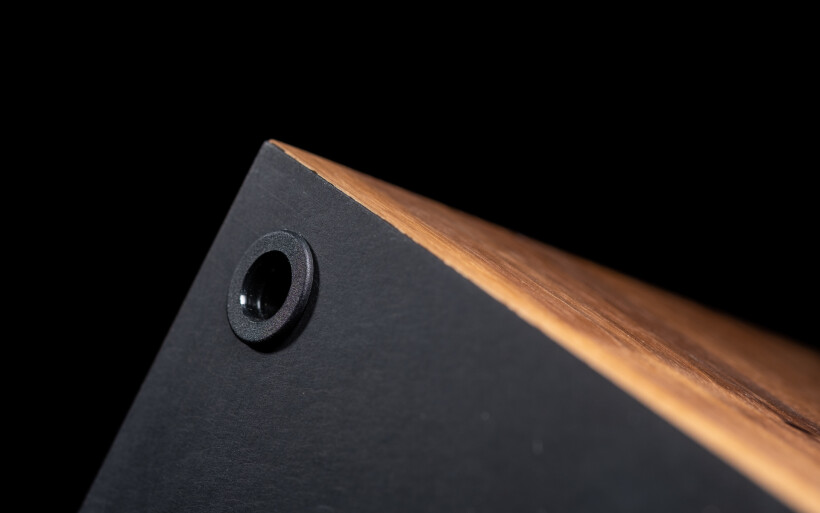 Although the Erik’s bass hit like a truck, reached low and remained perfectly clean whilst doing so, it also leaned more towards stiffness and highlighted edges than roundness and lots of filler. To get more of that, Trilogy’s monos fixed into class A drive were the perfect match. I got all the authority I could possibly want plus generously developed well-saturated textural tissue on top of that. I believe that speakers with rear-firing passive/active radiators – here i.e. Dutch&Dutch 8c or Buchardt Audio S400/A500 come to mind – would feel sensibly even more visceral inside my chest, but what the Erik did on this count was plenty already. Its ballsy precise take on bass was also replicated higher up. Firmly sketched instruments and voices had their frames emphasized more than internal contents for increased directness and visibility, and all that was sprinkled with lots of oxygen, immediacy, quickness and energy. These features supported via stout articulate flexile lows were particularly useful in i.e. releasing power stored in brisk acoustic guitar jobs, portraying finely pronounced female vocals, and highlighting all high-pitched tones suspended in-between. As far as this specific sonic flavor goes, this was the full-care package.
Although the Erik’s bass hit like a truck, reached low and remained perfectly clean whilst doing so, it also leaned more towards stiffness and highlighted edges than roundness and lots of filler. To get more of that, Trilogy’s monos fixed into class A drive were the perfect match. I got all the authority I could possibly want plus generously developed well-saturated textural tissue on top of that. I believe that speakers with rear-firing passive/active radiators – here i.e. Dutch&Dutch 8c or Buchardt Audio S400/A500 come to mind – would feel sensibly even more visceral inside my chest, but what the Erik did on this count was plenty already. Its ballsy precise take on bass was also replicated higher up. Firmly sketched instruments and voices had their frames emphasized more than internal contents for increased directness and visibility, and all that was sprinkled with lots of oxygen, immediacy, quickness and energy. These features supported via stout articulate flexile lows were particularly useful in i.e. releasing power stored in brisk acoustic guitar jobs, portraying finely pronounced female vocals, and highlighting all high-pitched tones suspended in-between. As far as this specific sonic flavor goes, this was the full-care package.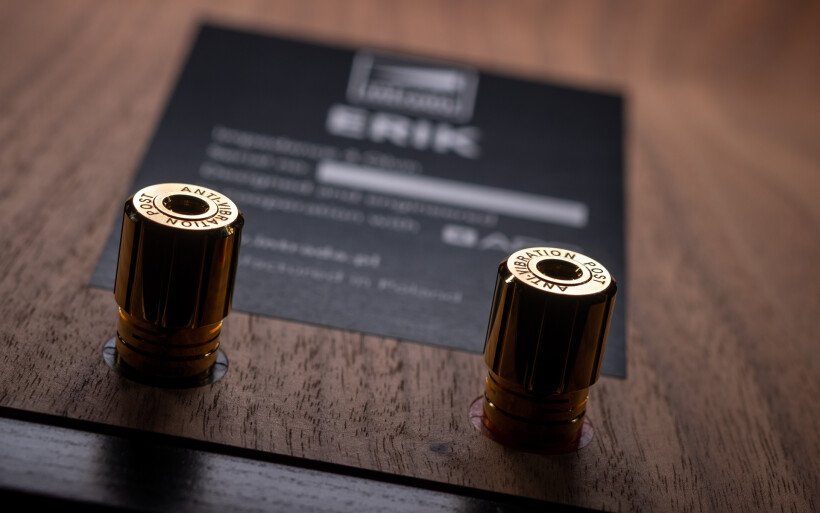 The Erik’s amply caffeinated open disposition naturally revealed what it didn’t do. Voicing built around midrange, calmly served thick meticulous bass blows, intimacy, audible substance and tonal warmth wasn’t on this menu. It included neither Spendor nor Harbeth types. It was no comfort food but an exotic dish that upon serving might still be partially alive on your plate. Intrada’s newcomer is aimed at brave enthusiasts attracted to this sort of excitement more than charm, expressiveness, mystery and dim atmospheric lights, and in that sense has a very well-defined strong personality that’s not for everyone. But then again, which speaker can please us all?
The Erik’s amply caffeinated open disposition naturally revealed what it didn’t do. Voicing built around midrange, calmly served thick meticulous bass blows, intimacy, audible substance and tonal warmth wasn’t on this menu. It included neither Spendor nor Harbeth types. It was no comfort food but an exotic dish that upon serving might still be partially alive on your plate. Intrada’s newcomer is aimed at brave enthusiasts attracted to this sort of excitement more than charm, expressiveness, mystery and dim atmospheric lights, and in that sense has a very well-defined strong personality that’s not for everyone. But then again, which speaker can please us all? The more hours passed by, the more mature the Erik had become. Similarly voiced speakers can sound garish, grainy, rough, sharp and thin, but this one did none of those offenses even during party-level auditions. Along with volume increase it just revved higher and higher without any signs of fatigue or composure loss. Here it’s fair to mention that my setup generously infused with all sorts of effective signal conditioners helps in keeping listed culprits in check, so this story’s subject meant for more affordable hardware might perform less spectacular elsewhere. Still, I rely on components I have and am accustomed to, and the Erik on duty with this lot sounded like a speaker set substantially dearer that it was, that’s the bottom line. All things considered I’ve found it as tastefully tuned as it was pleasantly different.
The more hours passed by, the more mature the Erik had become. Similarly voiced speakers can sound garish, grainy, rough, sharp and thin, but this one did none of those offenses even during party-level auditions. Along with volume increase it just revved higher and higher without any signs of fatigue or composure loss. Here it’s fair to mention that my setup generously infused with all sorts of effective signal conditioners helps in keeping listed culprits in check, so this story’s subject meant for more affordable hardware might perform less spectacular elsewhere. Still, I rely on components I have and am accustomed to, and the Erik on duty with this lot sounded like a speaker set substantially dearer that it was, that’s the bottom line. All things considered I’ve found it as tastefully tuned as it was pleasantly different.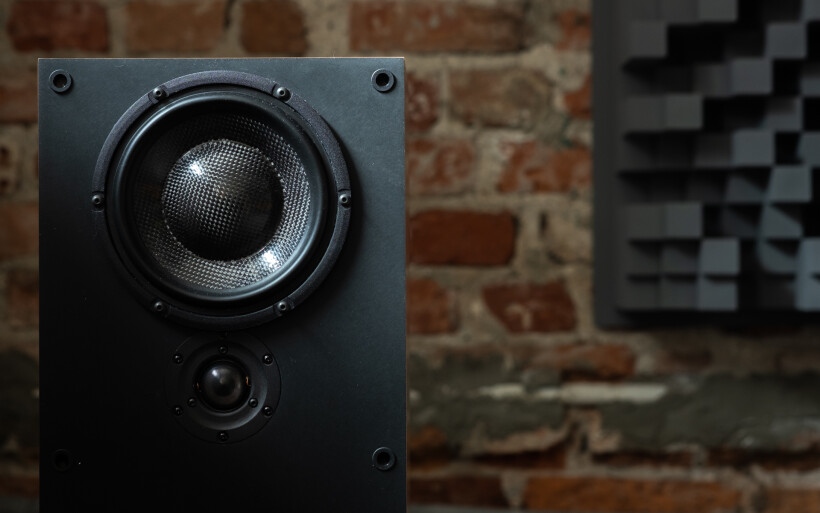 I’ve enjoyed myself with the Erik speedy, fit and open as described above, but curiosity about its positioning alternatives had to kick in eventually. Both speakers brought about 25cm closer to the front wall was all it took to steer their signature snappy dipole-like MO towards calmer bloomier ride. The result now was noticeably slower, chunkier, less impactful and not as electric, but not lazy or abnormally wooly in the grand scheme, not at all. Upon engaging the Bakoon with 300B tubes the Pole in fact sounded more sublime, delicate, seductive and informative than before but didn’t skip a beat. This newly found profile grew on me in time just enough to become as appealing as the previous one tuned for slams and ferocity. The Erik’s equal readiness for both was yet another major pro on top of everything else it managed to accomplish, and rather rare at that.
I’ve enjoyed myself with the Erik speedy, fit and open as described above, but curiosity about its positioning alternatives had to kick in eventually. Both speakers brought about 25cm closer to the front wall was all it took to steer their signature snappy dipole-like MO towards calmer bloomier ride. The result now was noticeably slower, chunkier, less impactful and not as electric, but not lazy or abnormally wooly in the grand scheme, not at all. Upon engaging the Bakoon with 300B tubes the Pole in fact sounded more sublime, delicate, seductive and informative than before but didn’t skip a beat. This newly found profile grew on me in time just enough to become as appealing as the previous one tuned for slams and ferocity. The Erik’s equal readiness for both was yet another major pro on top of everything else it managed to accomplish, and rather rare at that.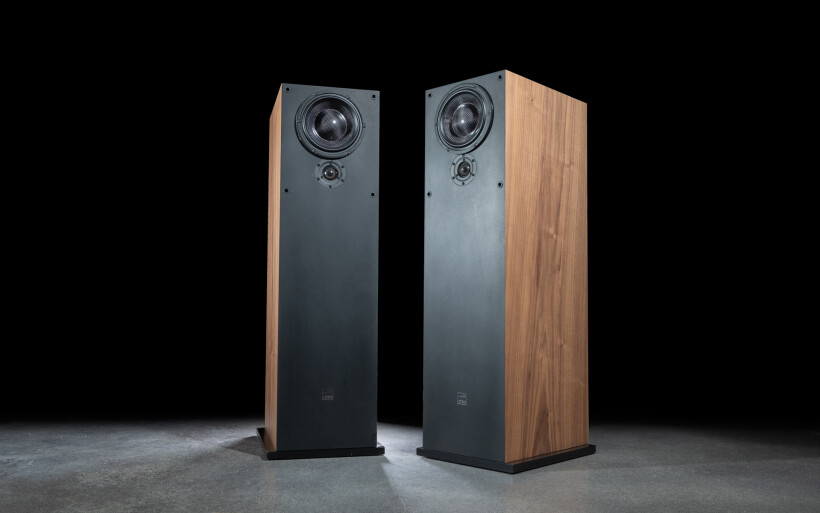 Just so I could map how the Erik fared against heavyweight competition, my crib’s primary resident Boenicke W11 SE+ had to step in. Their similar prowess on fronts related to spatial sizing, directness, energy and precise outlines wasn’t a surprise, so all music challenges in demand of power, elasticity, control and quickness resulted in a draw. The contestants weren’t alike, however. Intrada’s product at first struck me as even more agile, immediate, shimmery and slamming versus the tonally heftier more stately Swiss, but past this early sensation something of a far greater importance revealed itself. The latter easily matched the Erik on its strongest sonic assets, but also had the upper hand on more complex and pristine background, greater sensation of ambience, wider textural palette, heftier overall delivery and finer high notes. Although differently profiled, the W11 SE+ simply covered more bases and its advantages on these counts resulted in a higher-tiered more artful presentation. Considering the price difference between the two speaker sets this came as no shocker. Still, the Erik was nowhere near collapsing throughout the entire fight and that’s the most important takeaway.
Just so I could map how the Erik fared against heavyweight competition, my crib’s primary resident Boenicke W11 SE+ had to step in. Their similar prowess on fronts related to spatial sizing, directness, energy and precise outlines wasn’t a surprise, so all music challenges in demand of power, elasticity, control and quickness resulted in a draw. The contestants weren’t alike, however. Intrada’s product at first struck me as even more agile, immediate, shimmery and slamming versus the tonally heftier more stately Swiss, but past this early sensation something of a far greater importance revealed itself. The latter easily matched the Erik on its strongest sonic assets, but also had the upper hand on more complex and pristine background, greater sensation of ambience, wider textural palette, heftier overall delivery and finer high notes. Although differently profiled, the W11 SE+ simply covered more bases and its advantages on these counts resulted in a higher-tiered more artful presentation. Considering the price difference between the two speaker sets this came as no shocker. Still, the Erik was nowhere near collapsing throughout the entire fight and that’s the most important takeaway.
Summary
Although early on Intrada Erik didn’t struck me as any special and I couldn’t fathom what its makers Michał Gogulski and Grzegorz Matusiak wanted to achieve, they knew well how to open up their speaker roster with a properly loud distinctive bang. Their introductory effort was deliberately geared for sonic stunts way bolder and more serious than what its petite footprint could possibly imply, and this highly unique skillset effectively turned it into a very interesting performer.
Intrada Erik is nicely put together and loaded with costly ingredients to boost performance, but also designed to visually match many living spaces and vanish in there, which its plain safe dress code clearly shows. Beauty is in the eye of the beholder however, so you be the judge. On acoustic in-room compliance and overall domestication this speaker set scores very high though, and its voicing subject to noticeable flavor shifts via simple distancing triangulations is yet another big plus. No monster amp is needed to get it going, which is also nice.
Although Intrada Erik won’t please everyone and doesn’t even pretend to have such aspirations, it brilliantly mimics dipole sonics and that’s its key attractor. This clever compact ported design offers lively big-bore fully awake expansive action that normally calls for stout cone surface and prohibits venting plots, and that’s quite the achievement all by itself. If you’re after pleasant dipole brutality wrapped in a small package, Intrada’s newcomer fits that profile to perfection and might be just the ticket. Considering how enjoyably different, entertaining and all in all accomplished this Polish speaker set is, its price isn’t out of this world. ‘Til next time!
Associated Equipment:
- Amplifier: Trilogy 995R
- DAC: LampizatOr Pacific (KR Audio T-100 / Living Voice 300B + KR Audio 5U4G Ltd. Ed.)
- Speakers: Boenicke Audio W11 SE+
- Transport: Innuos Statement
- Preamplifier: Trilogy 915R
- Speaker cables: Boenicke Audio S3, LessLoss C-MARC
- Speaker signal conditioning: LessLoss Firewall for Loudspeakers
- Interconnects: Boenicke Audio IC3 CG
- Power components: Gigawatt PC-3 SE EVO+/LC-3 EVO, LessLoss C-MARC, Boenicke Audio Power Gate
- USB components: iFi audio iGalvanic3.0, iFi audio micro iUSB3.0, 3x iFi audio Mercury3.0, iPower 9V
- Rack: Franc Audio Accesories Wood Block Rack
- Network: Fidelizer EtherStream, Linksys WRT160N
- Music: NativeDSD
Retail prices of reviewed components in EU (excl. tax):
- Intrada Erik: €6’299
Manufacturer: Intrada


